The Work Isn’t About You. But It Is For You.
Most people think art is about expression. That what makes it valuable is what it reveals about the artist. As if truth lives in exposure. As if the more you share, the more powerful the piece becomes.
But the work that stays with you, the work that makes you pause in the middle of a busy room, the work that enters your body before your brain catches up, that kind of work doesn’t just express. It reflects.
It is not a declaration. It is a mirror.
And the best mirrors are not clean or sharp. They are soft around the edges. They hold. They notice. They let you see something you did not know needed witnessing.
That is the work I make.
Not autobiographical pieces that tell you who I am. Relational work that gives you back a part of yourself. Not loud. Not obvious. Not asking to be understood. Just present.
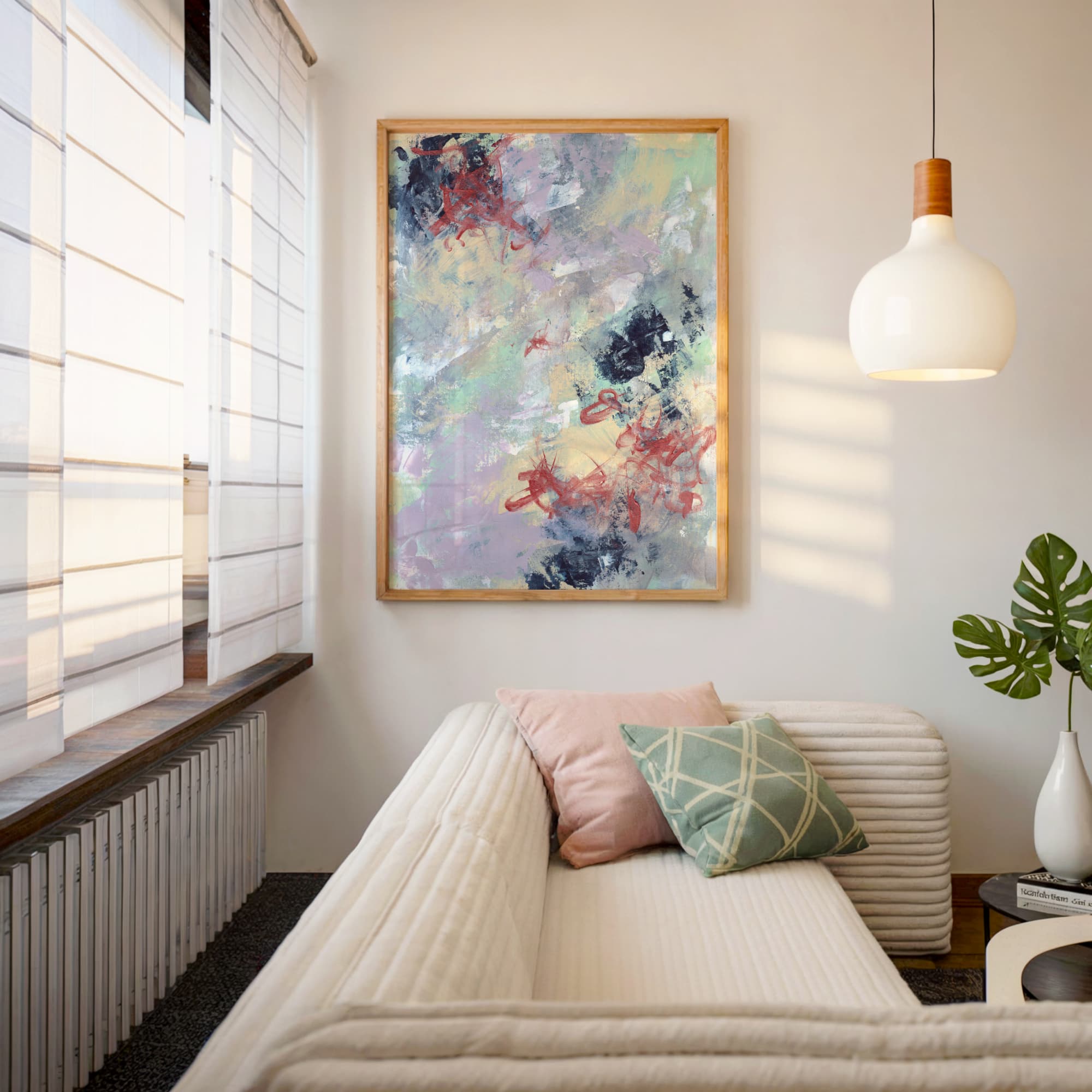
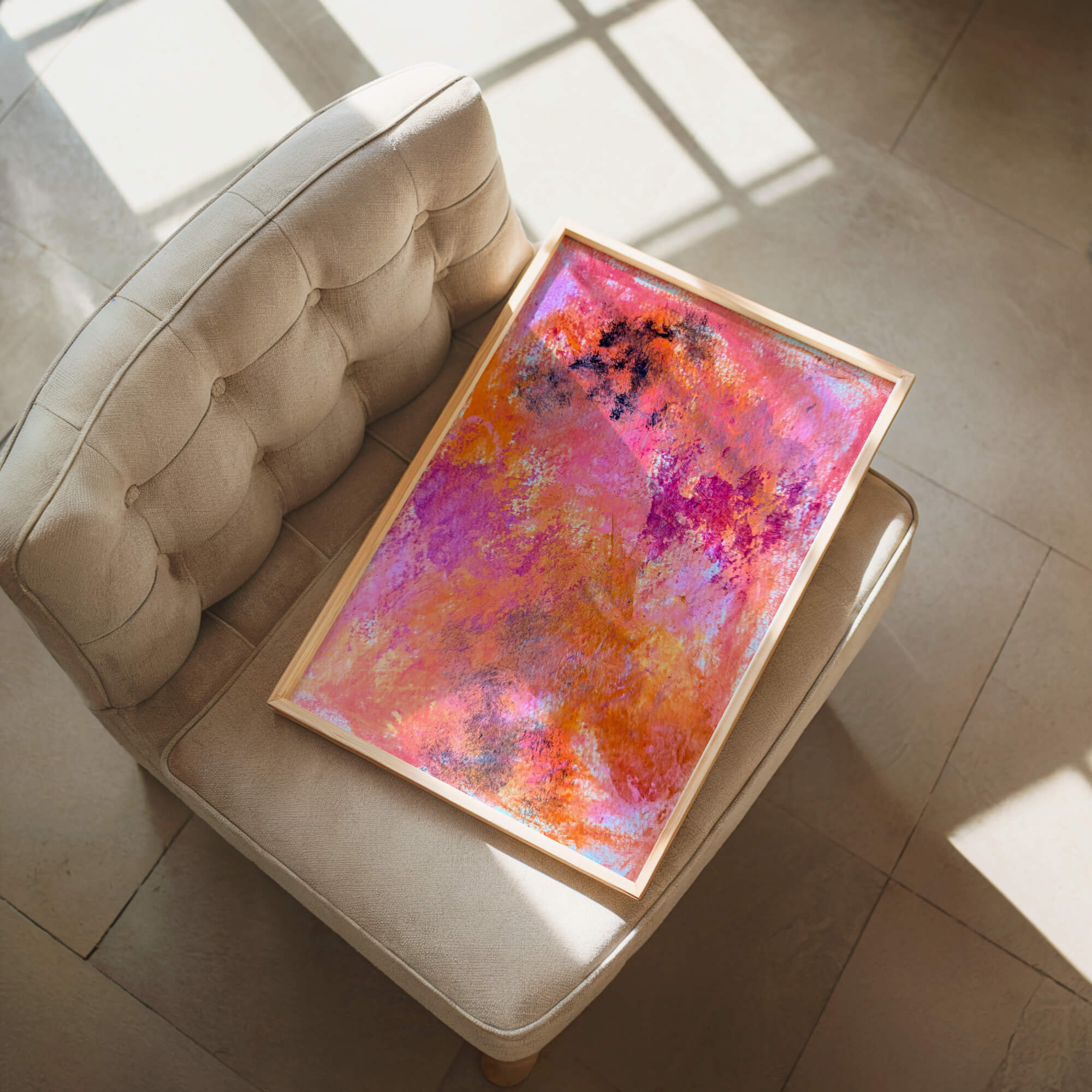
Why The Work Isn’t Mine Once It’s Made
I do not name everything I paint. I do not explain the story behind each piece. I do not walk people through the symbolism or the sequence or the meaning. Most of the time, I do not want to collapse the space the piece creates. I want to leave it open.
There is something sacred about ambiguity. Not confusion, but emotional openness. When a piece leaves room for interpretation, it becomes more than my story. It becomes a portal for someone else’s.
If I tell you exactly what a piece means, you will look for that and only that. You will edit your own response. You will shrink your interpretation to fit mine.
But when I let the piece live without a script, something else happens. The person standing in front of it starts to feel something real. Not what they are told to feel, but what actually stirs in them.
Maybe it is memory. Maybe it is longing. Maybe it is grief.
Whatever it is, it is not mine anymore. It is theirs. And that is how I know the work has started doing its job.
What Presence Looks Like In A Room
The pieces I create are not designed to decorate. They are not made to match the cushions or brighten the wall. They are made to change the atmosphere.
You can feel the difference. A simply decorative piece pulls your eyes outward. A presence-driven piece draws you inward. You do not look at it. You breathe with it. You settle. You pause.
Collectors tell me they start sitting longer in the room where the piece hangs. They slow down. They talk less. They feel held without understanding why. That is not an accident. That is the effect of emotional architecture.
Because presence is not passive. It holds weight. It grounds the space.
I do not create centrepieces. I create anchors.
And when a piece anchors a room, it does not just make it beautiful. It makes it safe.

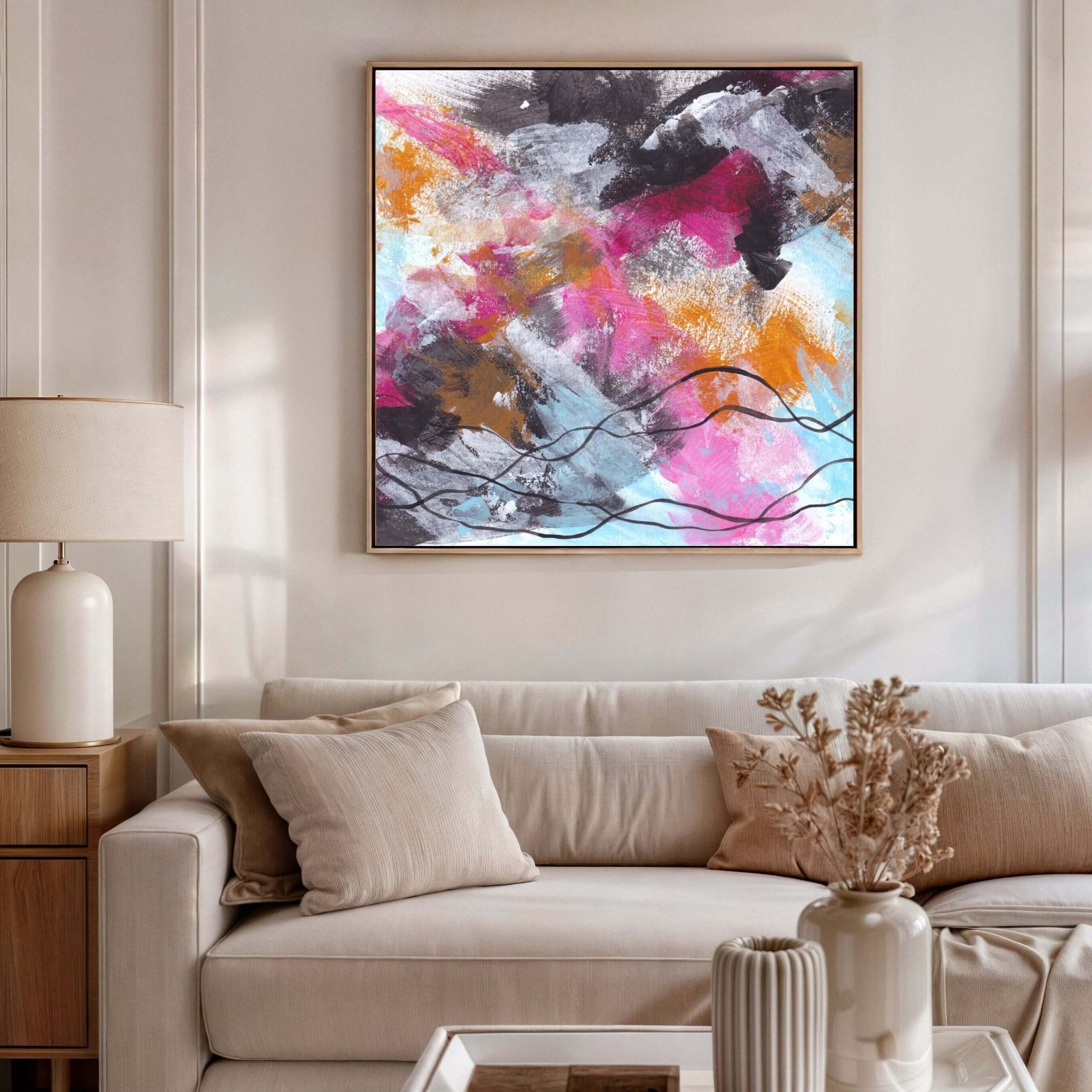
This Is Not Therapy. But It Is Emotional Work.
People often assume that because the work feels intimate, it must be therapeutic. That it must be about healing, catharsis, personal closure. But that is not the truth of it.
I do not paint to process. I paint to be present. The emotions I have already metabolised become the energy I carry into the piece, not the ones I am trying to figure out.
This is why the work does not feel volatile or raw. It feels resolved. It feels still. Not frozen. Held.
And that containment, the discipline of staying with something until it calms, transfers into the canvas. The viewer can feel that. They do not know why it is different. But their body responds. Something in them feels steadier, safer, less rushed.
The work does not try to fix anyone. It does not even offer comfort. What it offers is permission. To stop reaching. To soften. To be witnessed without having to explain.
That is not therapy. But it is care. And the kind of care that does not expect anything back carries its own power.
What Happens When You Stop Performing
When I started out, I thought the role of the artist was to be seen. I tried to put meaning into every gesture. I over-explained. I forced coherence.
But the more I did that, the more the work collapsed under the weight of it. It became smaller. Tighter. Controlled.
Presence cannot be performed.
Now, I do not go into the studio with a story. I go in with a posture. I go in asking, what is alive today? What needs space? What is not speaking but wants to?
Sometimes I do not paint at all. I just sit. I just breathe. I let the energy settle. Other times, I paint for hours without knowing why. The piece tells me when it is ready. Not the clock. Not the deadline. Not my ego.
When I stop performing, the work becomes clearer. Stronger. Cleaner. Not simpler, but more honest.
And the person who meets it later feels that clarity. They feel the difference between presence and projection.
That is what stays with them.
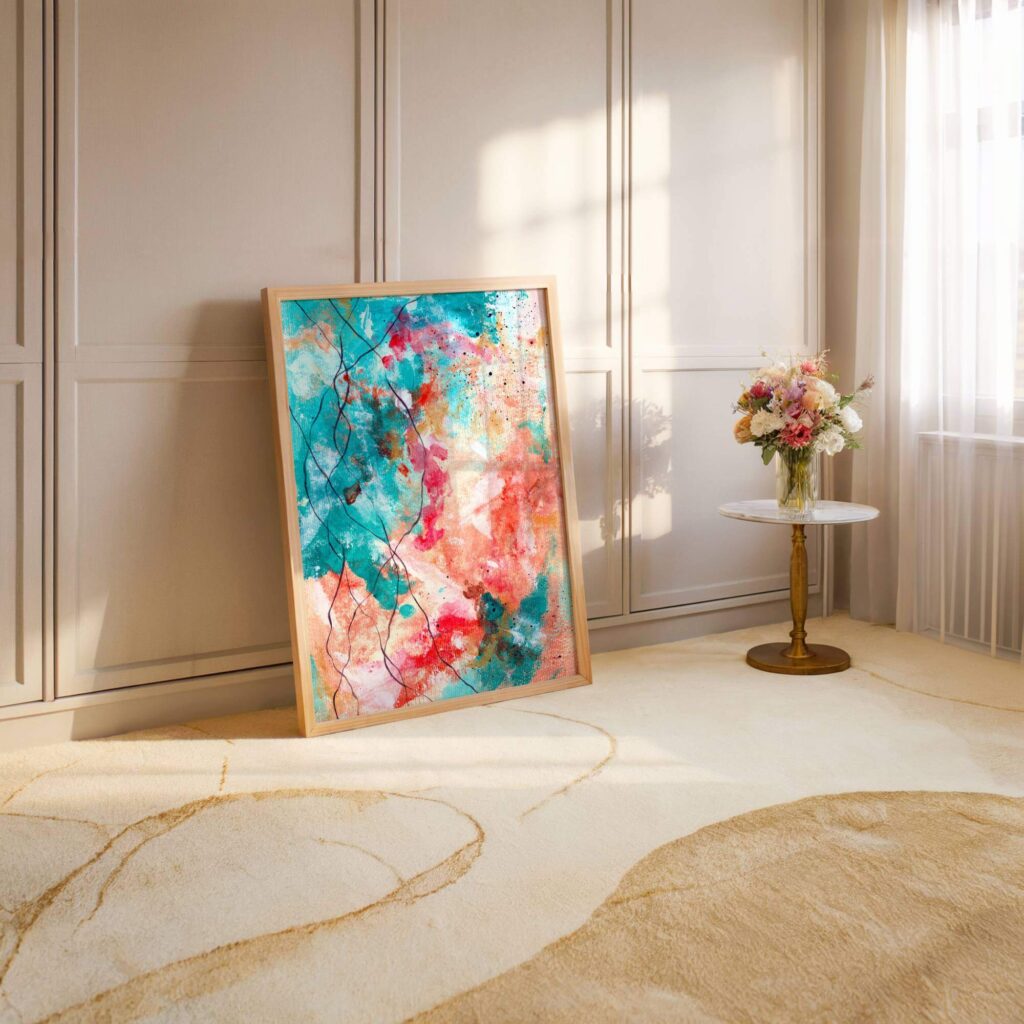
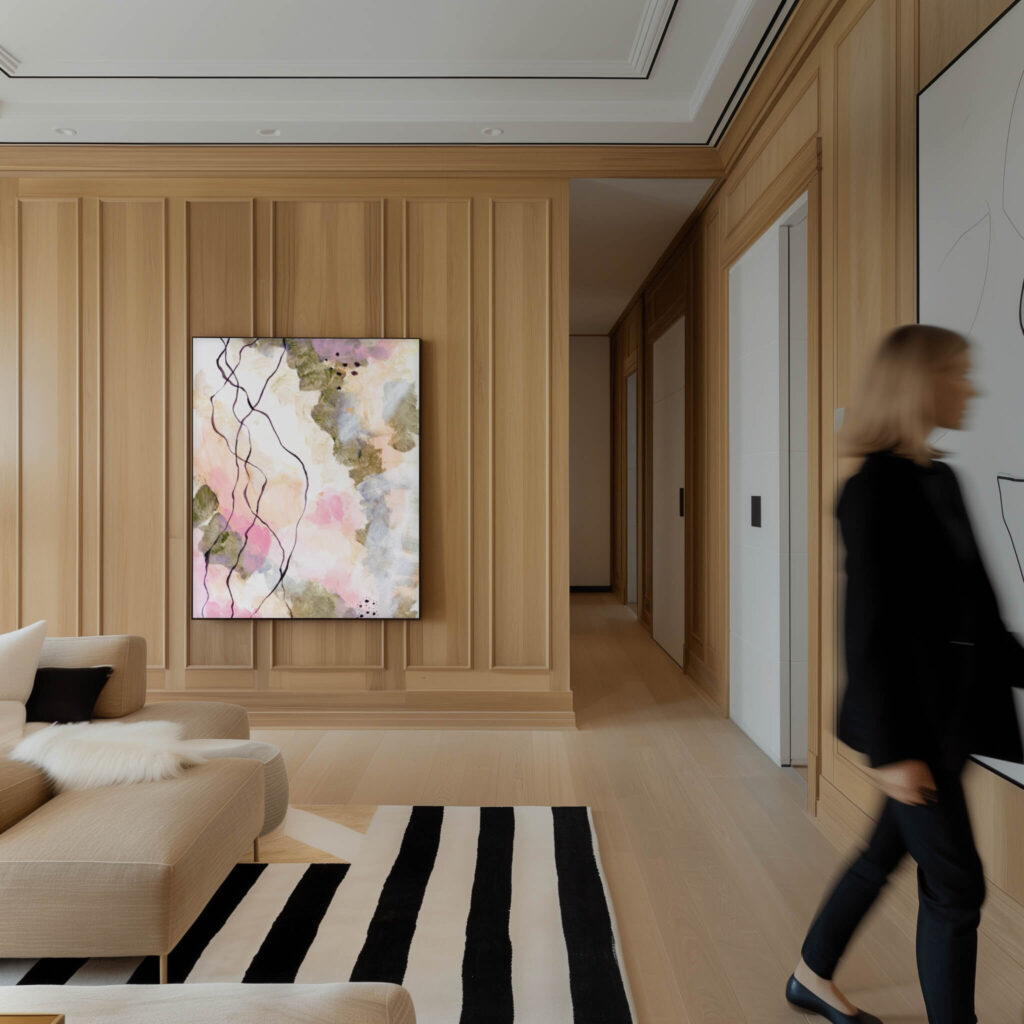
The Emotional Life Of A Piece Does Not End When It Is Sold
Some collectors hang the work in their home. Some place it in offices or therapy rooms or retreats. I do not always know where it goes. And I do not need to.
Because once the piece leaves the studio, its emotional life is just beginning.
It will witness things I will never see. It will hold space for conversations, silences, losses, beginnings. It will become part of the background for someone else’s next chapter. That is not distance. That is legacy.
The piece does not belong to me. It belongs to the moment it creates.
And that moment lives on. Every time someone notices it, even if only for a second. Every time it catches someone off guard. Every time it gives them just enough pause to feel something they were about to ignore.
That is the work doing what it was made to do.
Why Explanation Limits Emotional Power
People often ask, do you not want people to understand what you meant?
And the truth is, I do not.
Not because I am trying to be cryptic. Not because I want to avoid vulnerability. But because understanding is not the same thing as feeling.
When I explain too much, I create walls. I shrink the emotional field of the piece into a single meaning. And the second I do that, I tell the viewer, here is the box. Stay inside it.
But emotion does not live in a box.
Some of the most meaningful responses to my work have come from people who experienced something completely different from what I felt when I made it. They brought their own history. Their own atmosphere. Their own grief or quiet joy. And the piece met them there.
That is not a misinterpretation. That is success.
The work did what it needed to do. It opened.
And I did not interfere.
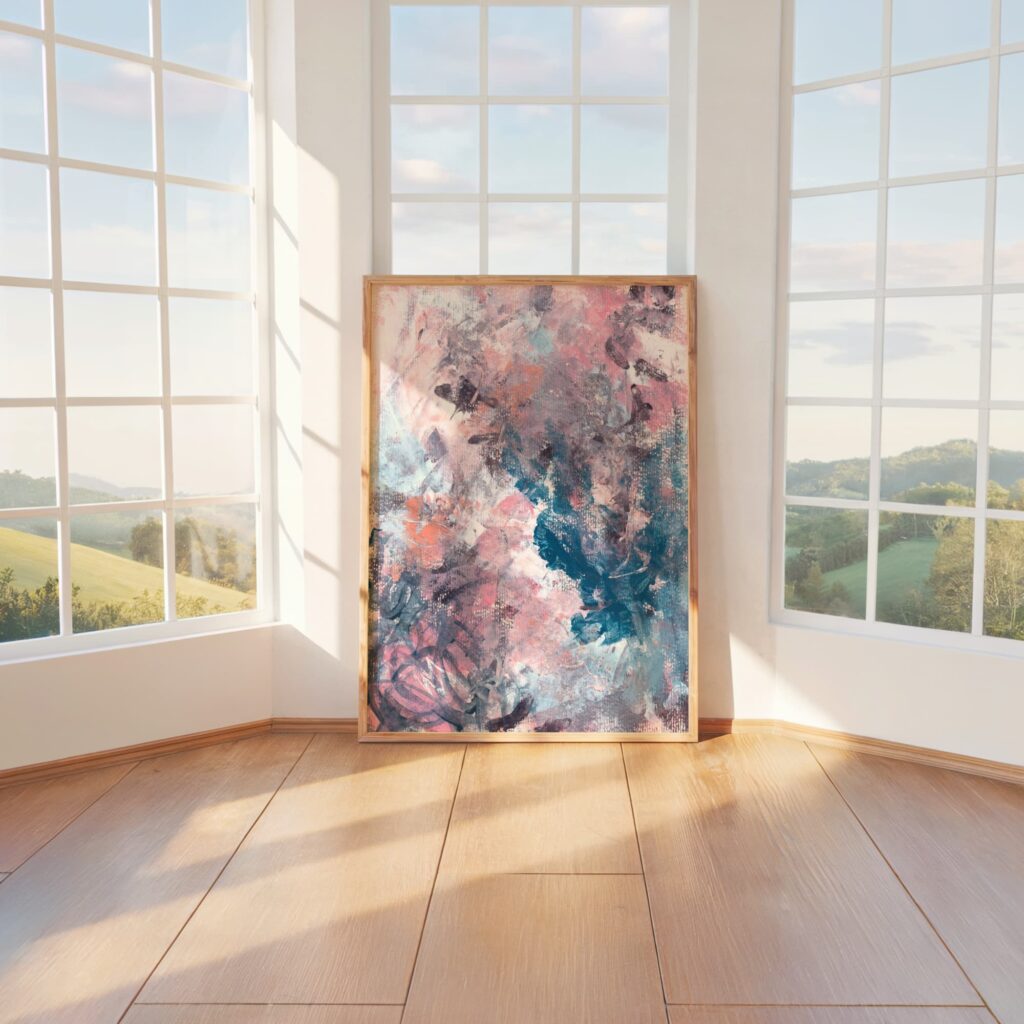
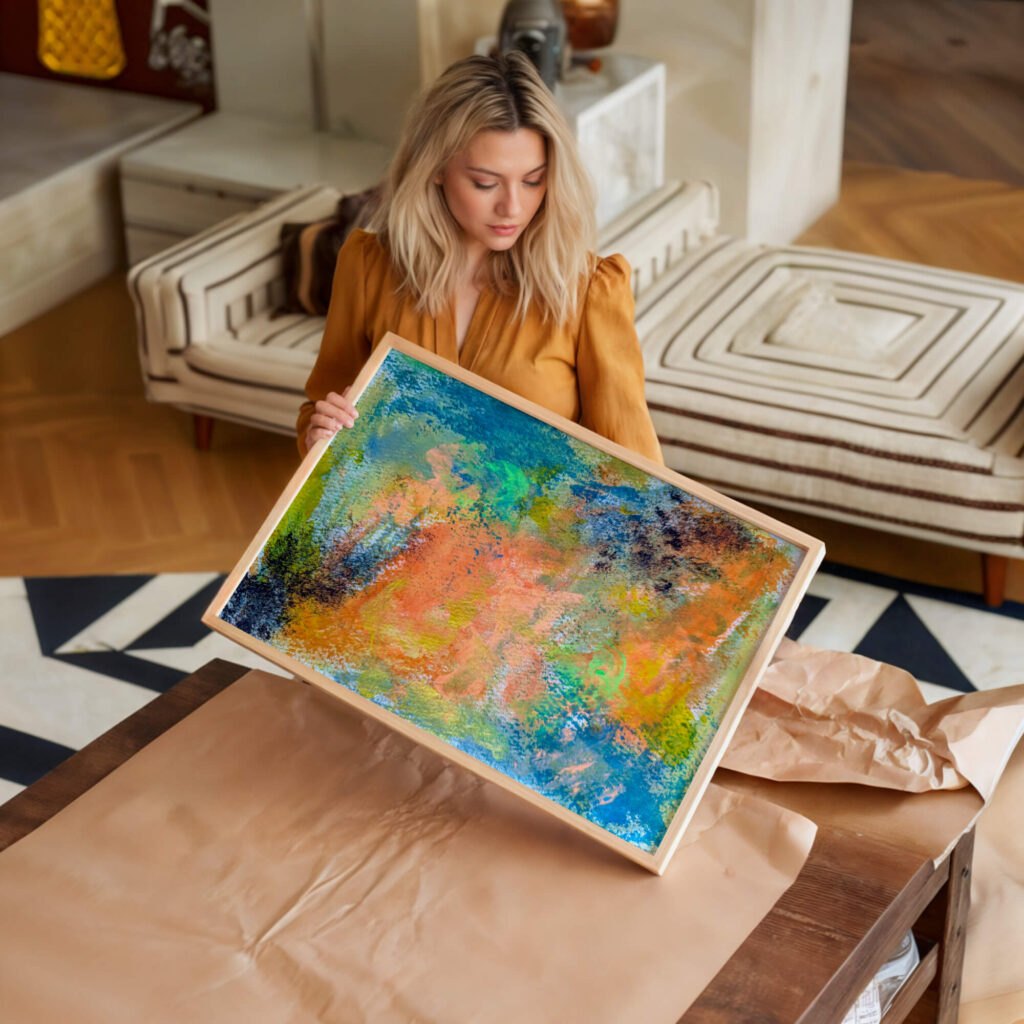
Art As Emotional Scaffolding, Not Symbolism
I do not paint symbols. I build scaffolding.
Not literal scaffolding. Emotional structure. Enough presence for someone else to feel something in their own timing, in their own way.
You do not need to know what a texture represents to feel held by it. You do not need to decode a palette to feel your chest soften.
Symbolism demands analysis.
Scaffolding allows experience.
That is what the best emotional spaces do. They do not direct you. They allow you.
When someone walks into a room and feels like they can finally exhale, it is not because the art made a point. It is because the art made space.
That is what matters more than anything else.
And that is what I want my work to do long after I have stopped touching the surface.
Who The Work Is Not For, And Why I Am Fine With That
Some people see my work and say, I do not get it.
That is fine. They are not meant to.
This work is not universal. It is precise.
It is for people who feel in layers. People who are sensitive to tone. People who know what it is like to be deeply affected by a room, a breath, a silence. People who do not need explanation to feel truth.
If you walk past my work and feel nothing, I am not offended. It is doing its job by not interrupting what is not ready to be felt. But when someone walks in and stands still, when they get quiet and they do not even know why, that is the moment the work was made for.
Not for the masses. For the few who are already listening.
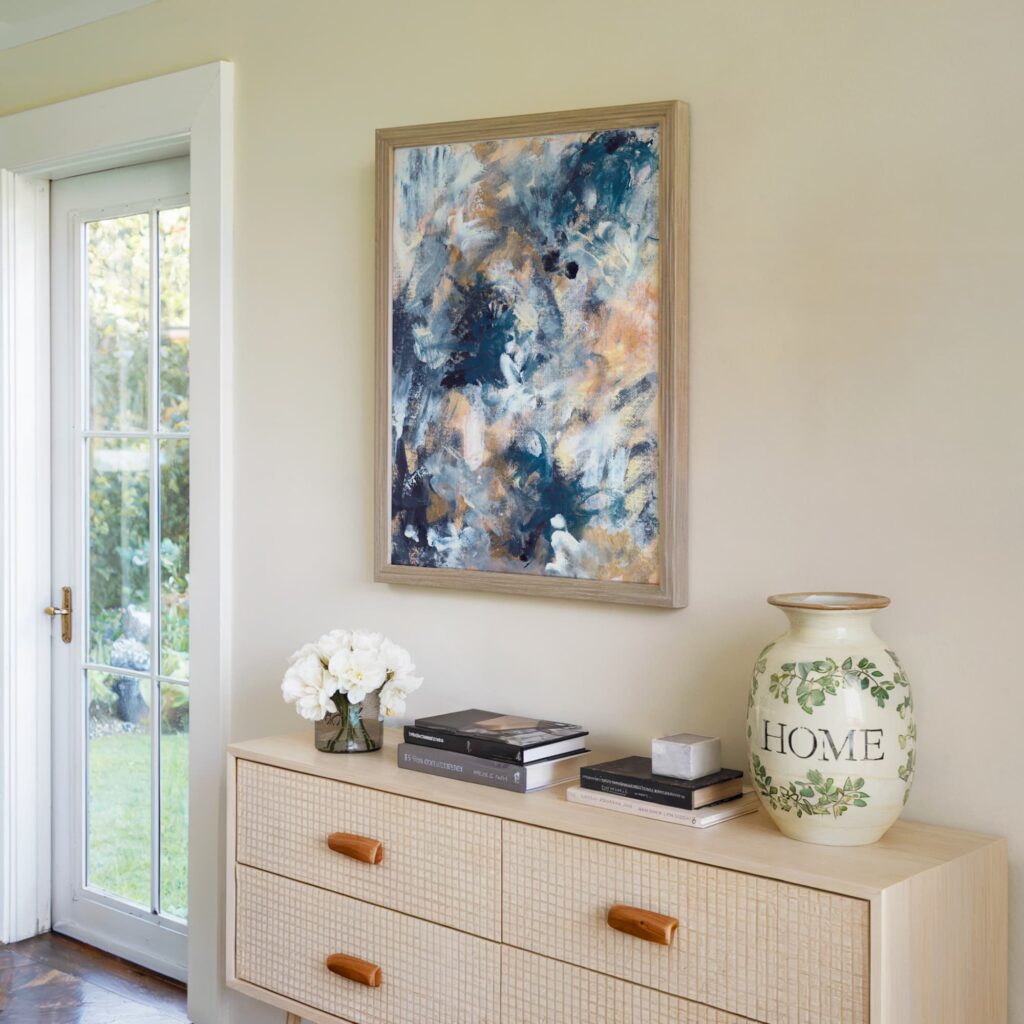
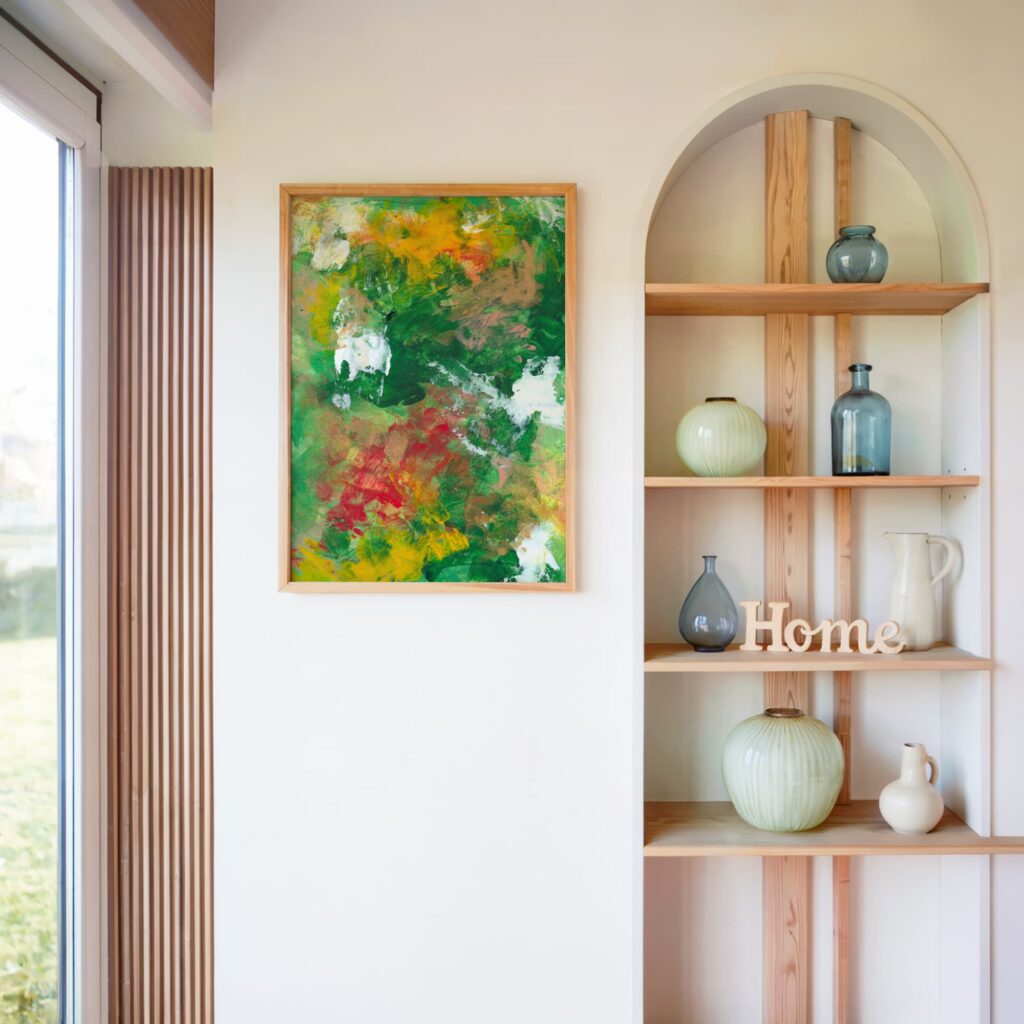
Why I Paint Like This And Not Another Way
There are easier ways to make art. Easier ways to get attention. Easier ways to fit in with the galleries and buyers and curators who want something obvious. I know that.
But I do not paint to fill space. I paint to change it.
I could make louder work. I could use recognisable figures. I could tell stories that are easier to frame and sell. I have done all that before. And it never lasted. Because it was not mine.
This work is mine. Not in ownership. In responsibility.
It carries my presence. It holds my stillness. It reflects the emotional honesty I fight to keep in every part of my life.
And it gives that honesty to someone else, without needing them to know where it came from.
That is worth more to me than clarity. Or trend. Or validation.
The Stillness Is Not The Subject. It Is The Method.
Stillness is not what the work is about. It is how the work is made.
It is not a theme. It is not a message. It is a rhythm. The pulse I stay with while making decisions. The breath I come back to before each gesture. The silence I hold instead of overworking a piece out of insecurity or fear.
Stillness lets me hear when the piece shifts. When something changes in the emotional field. When I need to step back instead of push through. When to add, and more importantly, when to stop.
Most people assume the hardest part is starting.
It is not. The hardest part is stopping. Not out of fatigue or lack of ideas, but because the piece has become strong enough to hold itself. Because the energy is complete.
Stillness teaches that. Not silence. Not avoidance. Not waiting for perfection. Just listening. Closely. Kindly. Without panic.
The result is not clean. It is clear.
And clarity changes a room faster than volume ever will.
My Offerings
Whether you’re a private collector, a wellness-focused brand, or a designer sourcing for a high-calibre project, I offer art that resonates deeply and subtly.
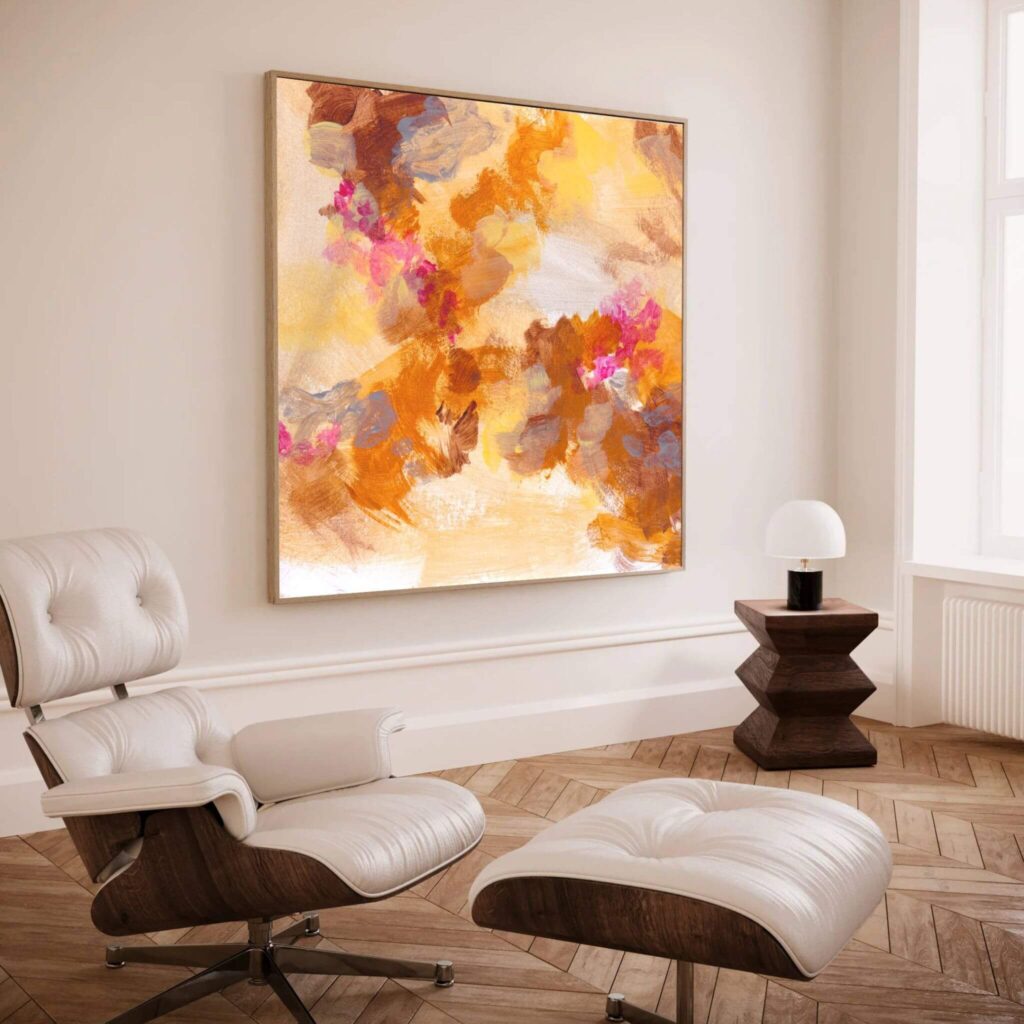
Collector's Vault
Canvas prints from the archive, made with emotional resonance and sustainable materials for spaces seeking depth.
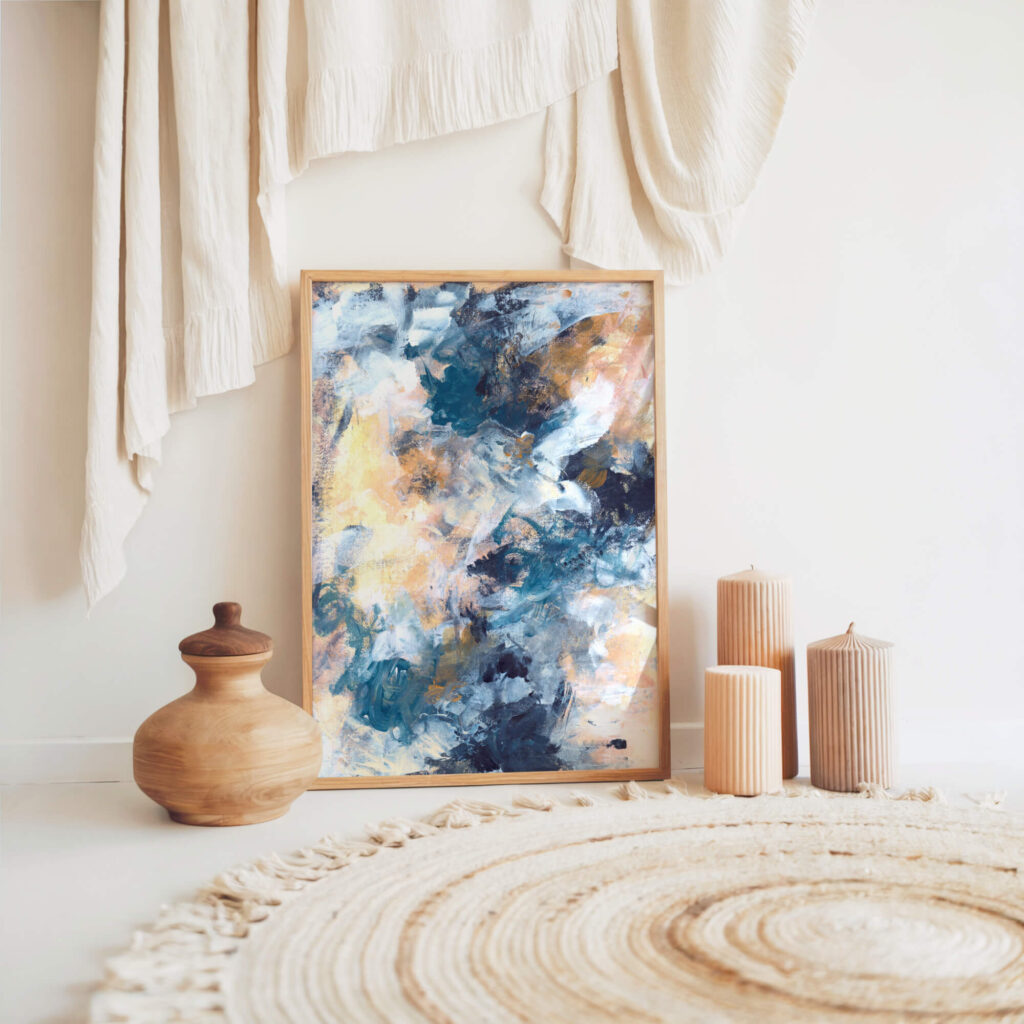
Capsule Commission
Created privately, one at a time, through stillness and reflection. Limited spaces each season to preserve depth and intimacy.
The Last 10
Ultra-limited, hand-embellished editions. No more than ten will ever exist. Made to ground, steady, and hold presence at the highest tier.
Every Piece Is A Conversation I Never Interrupt
When I speak about emotional architecture, I mean it literally. I mean that each piece is a structure I build to support something fragile enough to be felt, but strong enough to stay.
I do not just start throwing paint. I wait to hear the tone of what is asking to come through. That tone might arrive as a pressure in my chest. A memory. A tightness in the neck. A colour I cannot ignore.
The first layer is usually quiet. It is me asking, is this true? Not visually. Emotionally.
If I get a yes, I keep going. If it feels off, I strip it back.
There is no formula. There is only relationship.
And once the piece is complete, I never go back to explain it. That would be like interrupting someone mid-grief to narrate their process. I let the piece finish the conversation it started. Even if I no longer remember what it said to me, someone else will hear it when they are ready.
And it will not need my voice to land.
Legacy Is Not What You Leave Behind. It Is What Stays Present.
People talk about legacy like it is a future outcome. Like something you earn once you are gone. But real legacy is not about visibility. It is about presence. What stays when you leave the room. What lives on in someone else’s rhythm, breath, or memory because of what your work gave them.
The pieces I have created are already doing that.
One sits in the quiet corner of a therapist’s office. One hangs above the stairs where a woman said she finally forgave her father. One is in the home of a man who says he does not understand abstract art, but could not stop thinking about this one.
That is legacy.
Not what is written in catalogues or stamped with prestige. What holds someone long enough for them to become more themselves.
My work is not a broadcast. It is a presence. And presence lingers.
Even in silence. Especially in silence.
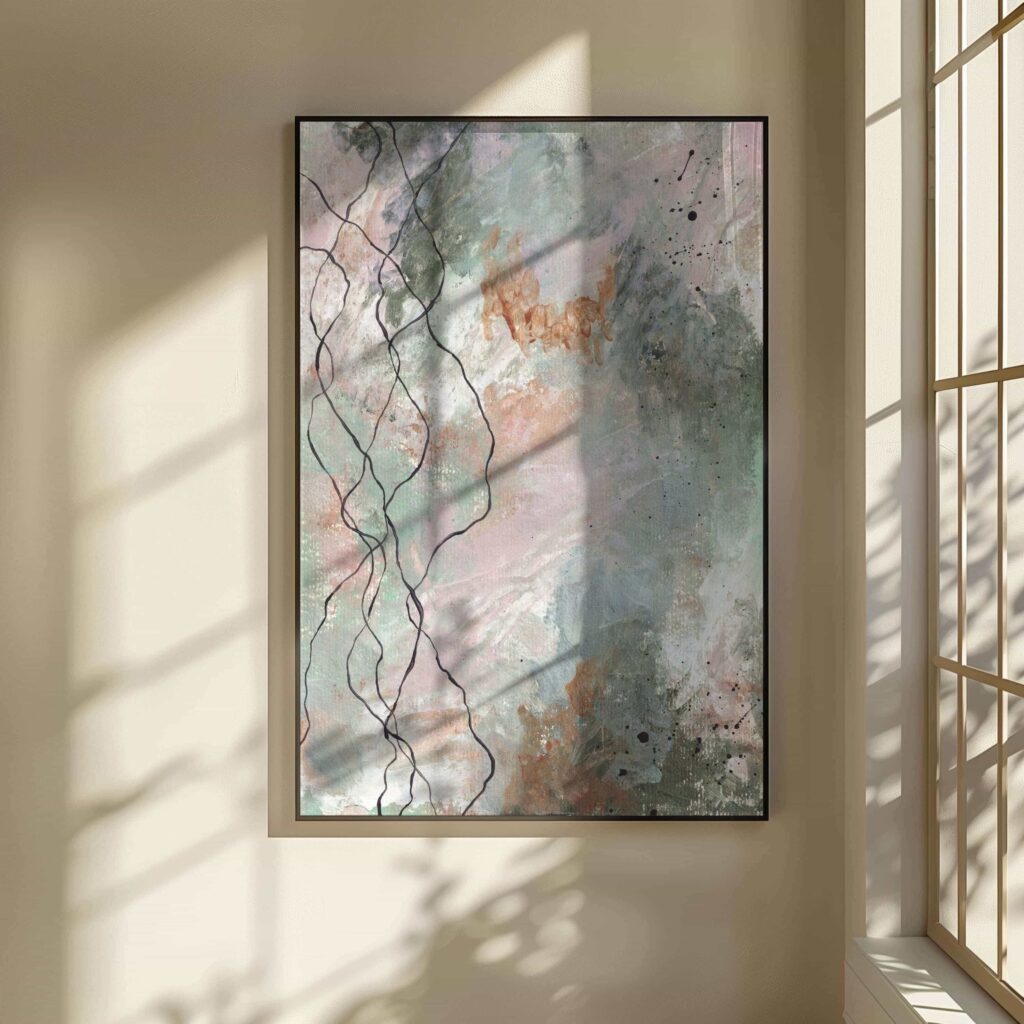
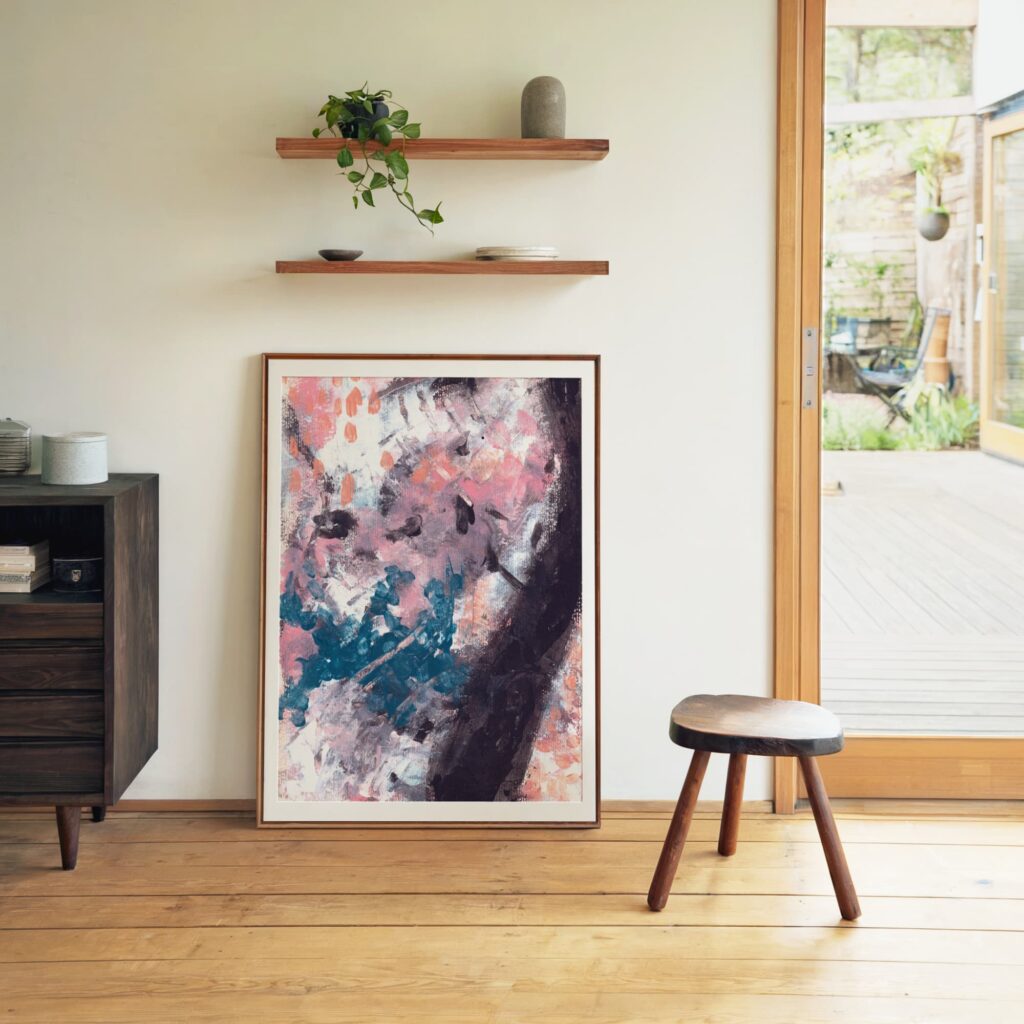
If You Are Still Here, The Work Might Be Yours.
You do not need to know exactly what you are looking for. You do not need the vocabulary. You do not need to be a collector or even consider yourself a creative. You just need to feel something here that is worth staying with.
If you do, if something in this text or this tone has found you, you are welcome to explore the pieces that came from the same place.
They were not made for show.
They were made to hold.
Explore Legacy Thread
https://vikithorbjorn.art/legacy-thread
